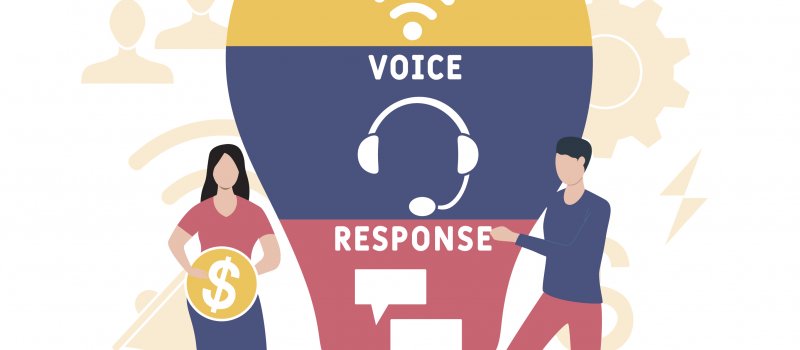Contact centers seek to address customer queries quickly and ensure positive experiences. They can do that more adeptly with contact center technologies.
Contact centers are the heart of your customer experience strategy. They are the first line to address customer queries, resolve problems, and build trust. In the modern world, customers want choices on how they interact with you. To meet their needs and ensure positive experiences, you’ll need to arm your team with contact center solutions.
There are a variety of contact center software options. Many have similar functionality and are cloud-based, so they are accessible anywhere. But what technologies will make a difference for your agents and employees?
VoIP Telephony
Voice over Internet Protocol (VoIP) telephony revolutionizes communication by enabling phone calls over the internet rather than traditional phone lines. This modern solution is highly scalable, allowing businesses to add or reduce users as needed without significant infrastructure changes.
With VoIP, you can achieve:
- Cost savings due to lower call rates and minimal hardware needs.
- Flexibility to work from anywhere, as long as there’s an internet connection.
- High-quality audio when paired with reliable internet service.
By choosing a robust VoIP telephony solution, your organization can enhance collaboration and improve customer interactions while adapting to evolving business needs.
Automatic Call Distributor (ACD)
ACD, also known as automatic call distribution, describes a telephony system that can recognize, answer, and route calls to the correct agents best suited to help the customer. Elevate ACD to enable even more effective distribution of calls with intelligent routing. In this scenario, you’ll use a skills-based routing system. Customers then go to the queue of those with the most relevant training.
This automation is valuable for several reasons. First, customers don’t get passed around to other departments. Second, they’ll likely wait for a shorter amount of time. Third, agents will appreciate the efficiency of the workflows. It’s the foundation for any premium contact center software.
Interactive Voice Response (IVR)
IVR works in tandem with ACD. It’s an automated phone system that interacts with callers. It can gather the information needed to distribute the call effectively. It can also provide customers with self-service options without speaking to an agent (e.g., get directions to a location or check a balance).
Customizing IVR can be tricky, but not when you have a wizard-based tool. Tracking IVR interactions and aggregating data are also useful to determine the effectiveness of your IVR.
What else can you do with an IVR system?
- It can also work as an outbound notification solution. Customers receive the outbound callout, and it connects them to an agent.
- Another feature to look for in IVRs is the ability to set up multilingual support.
- IVR menus can act as private data collectors for customers calling in to make payments.
- IVR can also invite callers to leave a voicemail or request a call-back.
Webchat and Chatbots
Webchat and chatbots are essential tools for modern contact centers. They provide a preferred communication channel for customers and offer quick, real-time responses. This immediacy helps customers find the answers they need faster, potentially leading to quicker purchases or conversions. As a result, both webchat and chatbots can drive revenue while enhancing customer satisfaction.
When evaluating a webchat or chatbot solution, look for these key features:
- Auto-detection of device type
- Ability to collect and analyze data
- Seamless integration with your website and an intuitive user interface
- Compatibility with existing chat activation models
- Queue management features, like previews of wait times
- Interactive chat responses (ICR) to assist visitors when live agents aren’t available
With these capabilities, you’ll have a powerful webchat and chatbot system that can significantly improve your customer support and communications.
Omnichannel Routing
In addition to ACD, your call center can integrate all channels available to customers — voice, email, social media, and chat. Omnichannel routing works the same way regardless of the communication type. This contact center technology enables you to streamline all customer interactions. It can boost productivity and ensure that your customers can conveniently contact you on their terms.
Outbound Notifications
You can use call center technology for outbound notifications. These can be via voice, SMS, or email. It applies to many different industries, and you can customize it. Some use cases include:
- Appointment reminders
- Reservation confirmations
- Alerts for updates or outages for utility or ISPs (internet service providers)
- Payment prompts or receipts
- On the way messages
- Promotions, offers, and upselling campaigns
It’s an easy way to notify customers proactively. It can also reduce appointment no-shows and past due payments.
Workforce Management Tools
Contact supervisors need to ensure that they have proper staffing and that employees are delivering quality service. There are several workforce management contact center technologies to address this, such as:
- Schedule managers that integrate agent schedules and breaks, manage vacations and shift trades, monitor schedule adherence in real time, and generate reports.
- Quality assurance and monitoring tools including customer call recording, live monitoring, whisper, and barge-in, agent chat log review, and other evaluation criteria.
- Reporting and performance data with real-time dashboards, detailed queue and agent statistics, and custom options. These analytics also allow you to forecast the number of agents you’ll need at peak times.
CRM Integration
A company’s customer relationship management (CRM) system is a central repository for customer information. It can provide context and insights if available to your agents. It can work in tandem with IVR via computer telephony integration (CTI). The caller information and customer data your employees need pops up on their screen as they connect with the customer.
Knowledge Management
Your agents need easy access to knowledge base articles. These can be critical in how fast they get up to speed on the customer’s issue. These materials offer your employees insight into possible resolutions for the problem at hand.
You don’t want these to be hard to find or not allow for searching. Keeping these documents in a secure and cloud-based storage space can significantly help your team.
Call Analytics
Call analytics empowers contact centers to make data-driven decisions and optimize performance. By tracking agent productivity metrics, such as average handle time and first call resolution rates, managers can identify areas for improvement and reward top performers.
Key benefits of call analytics include:
- Monitoring agent performance through detailed insights.
- Understanding call volume trends to allocate resources efficiently.
- Tracking the customer journey, from initial contact to resolution, for a holistic view of service quality.
- Live sentiment analysis tools that assess caller emotions in real time, enabling agents to adjust their approach dynamically.
Implementing call analytics helps businesses refine their strategies, improve customer satisfaction, and maximize operational efficiency.
CTI (Computer Telephony Integration) Dialers
CTI integrates phone systems with computer applications, streamlining workflows and increasing efficiency. A standout feature is predictive dialers, which automatically initiate phone calls based on sophisticated algorithms, connecting agents only when a live customer answers.
Additional capabilities include:
- Automated dialing, reducing manual tasks and ensuring higher call volumes.
- Seamless synchronization with CRM systems for real-time access to customer information.
- Call logging to maintain accurate records and improve follow-up processes.
CTI dialers empower agents to focus on meaningful conversations, driving higher productivity and better customer outcomes.
Call Queuing
Call queuing ensures that incoming calls are managed effectively, even during peak times. By placing callers in a virtual line, this feature minimizes frustration and enhances the overall customer experience.
Features and benefits of call queuing:
- Organizes and manages incoming calls based on priority or agent availability.
- Provides real-time queue updates, such as estimated wait times, to set customer expectations.
- Offers callback options to reduce perceived wait times.
- Integrates with routing systems to match callers with the most suitable agents.
An effective call queuing system reduces abandoned calls and keeps both customers and agents satisfied with smoother workflows.
Upgrade Your Contact Center Technologies
In review of these technologies, how does your current contact center software compare? Are you missing out on opportunities to empower contact center agents and delight customers? You don’t have to with Intermedia Contact Center.
View all its features today and request a demo.
March 1, 2025
Explore other posts on these topics: Contact Center





